Browse the Architizer Jobs Board and apply for architecture and design positions at some of the world’s best firms. Click here to sign up for our Jobs Newsletter.
Naturally occurring, stone has been a staple of building materials since the beginning of time. The major benefits of stone cladding are its strength, durability and aesthetic appeal. With a myriad of possibilities that can enhance the look of any exterior or interior, having a sound understanding of stone cladding is paramount to ensuring proper usage within your project. In order to gather the knowledge to elevate your next stone-clad project, Architizer spoke with Sander Nauenberg of Island Stone.
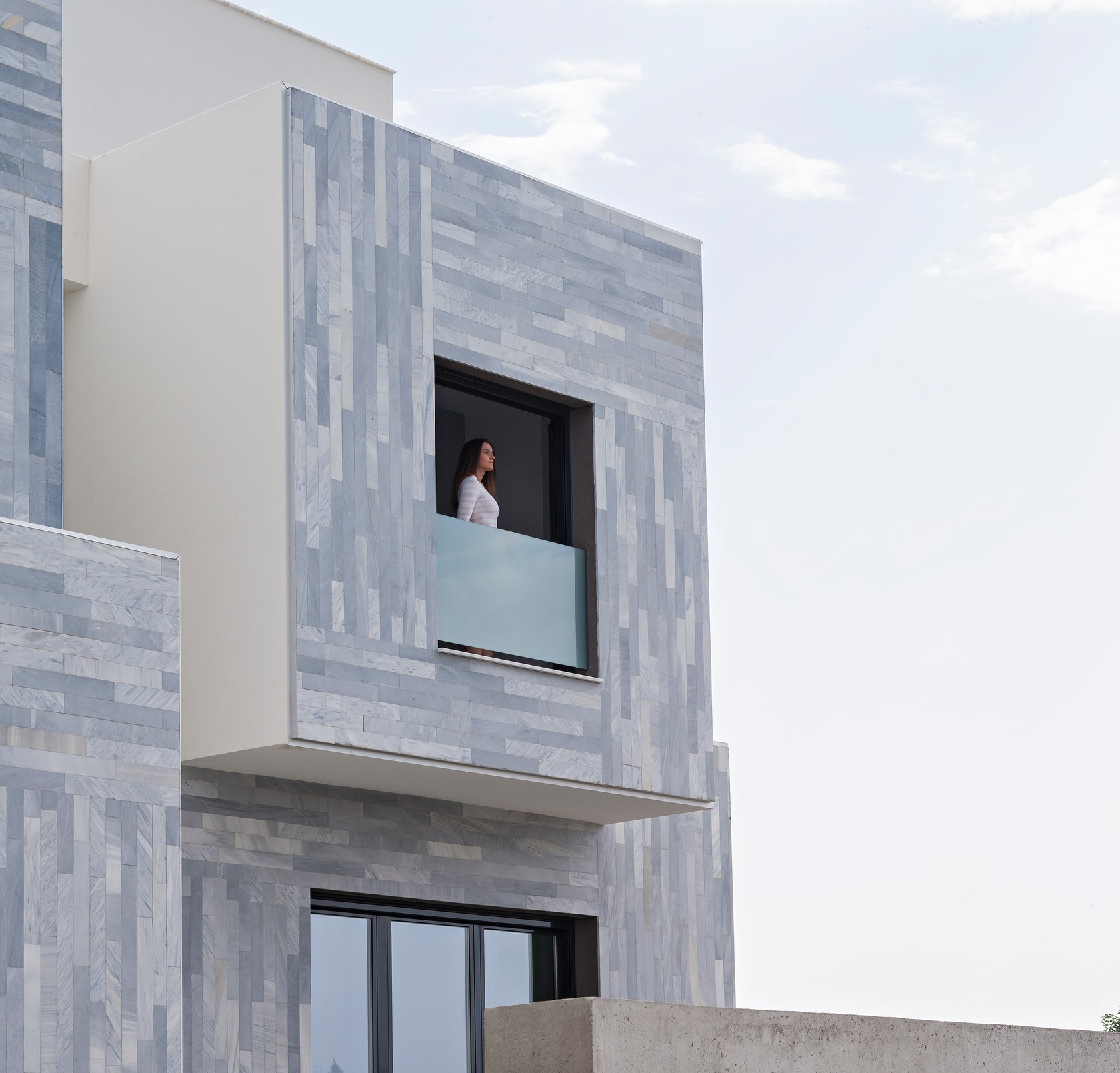
A&T HOUSE by Ariasrecalde Taller de Arquitectura is clad in marble by MACAEL MARBLE
Basic Categorization
To achieve a safe and reliable fixing system for stone cladding, it is essential to fully consider the implications of the weight and properties of natural stone, early on in the design work. “Weight is the primary area of concern when building with stone. Fundamentally, you are talking about adhering or attaching a very heavy material to a vertical surface,” said Nauenberg.
Traditional Handset Cladding: Traditional handset cladding is a longstanding building practice whereby natural stone is fixed to a pre-constructed backing structure. Together, these components provide the exterior envelope for a building.
Traditional handset cladding systems transfer the weight of the heavy stone to load bearing fixings situated at the floor plates. These systems must include both movement joints and compression joints. The most common types of natural stone used for with traditional handset façade cladding systems are granite, limestone and sandstone, however marble and slate are also used.
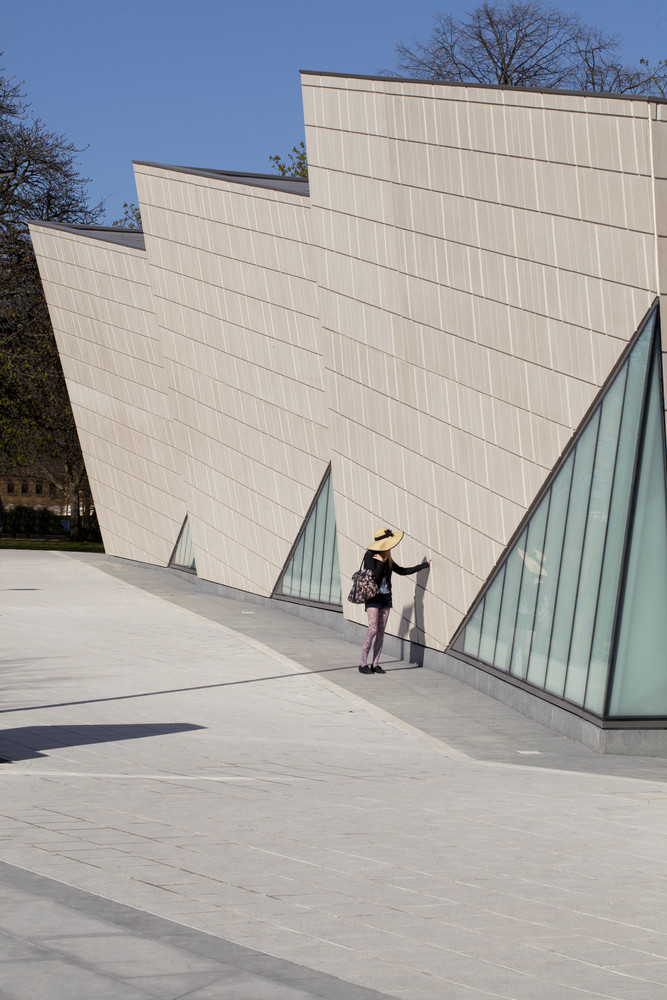
Sea City Museum by Wilkinson Eyre Architects; image via ArchDaily
Rainscreen Principle: Natural stone is gaining increasing popularity as a material harnessed to create dramatic and high-performing rainscreen façades. Stone panels are installed onto the building face using either a concealed system or an exposed clip system. Stone-clad rainscreen façades are most commonly back-ventilated and consist of an interior drainage cavity, which helps swiftly remove any moisture that may seep behind.
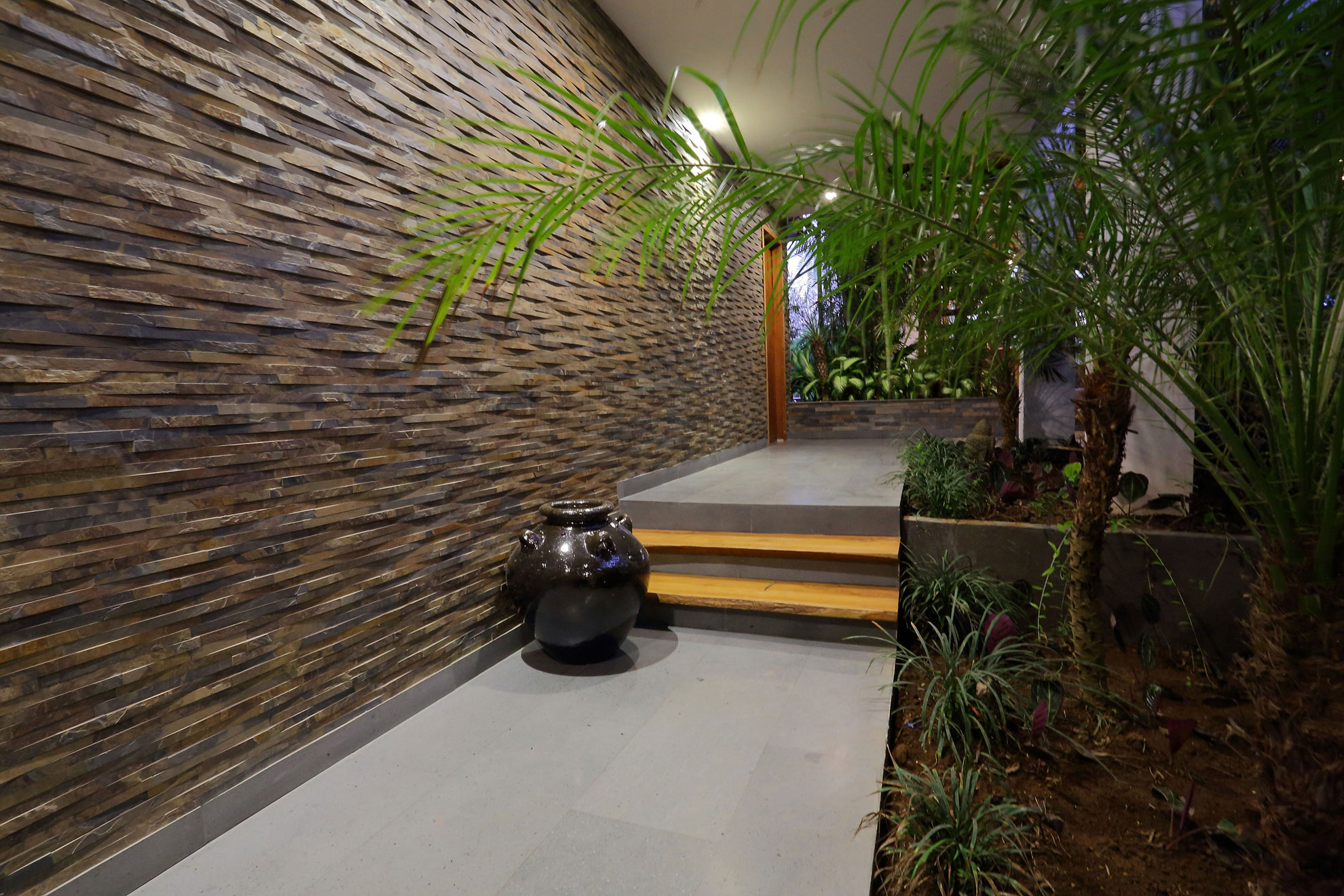
Rustic Golden Slate Corridor; image via Island Stone
Custom Cladding: As displayed by Island Stone‘s portfolio of work, boutique manufacturers can also help architects build an array of custom stone clad walls that are reminiscent of intricate mosaics. If this is something that you are interested in, consult with specialty manufacturers such as Island Stone, early on in the design process.
Material Categorization
Many types of natural stone are excellent cladding materials. These can be broadly divided into three geological groups: sedimentary rocks such as limestone and sandstone, metamorphic rocks such as slate and marble and lastly, igneous rocks such as granite.
In selecting the best type of stone, architects must consider a number of factors including appearance, intended use, size of the project, and most importantly, the composite that will provide adequate strength and durability.
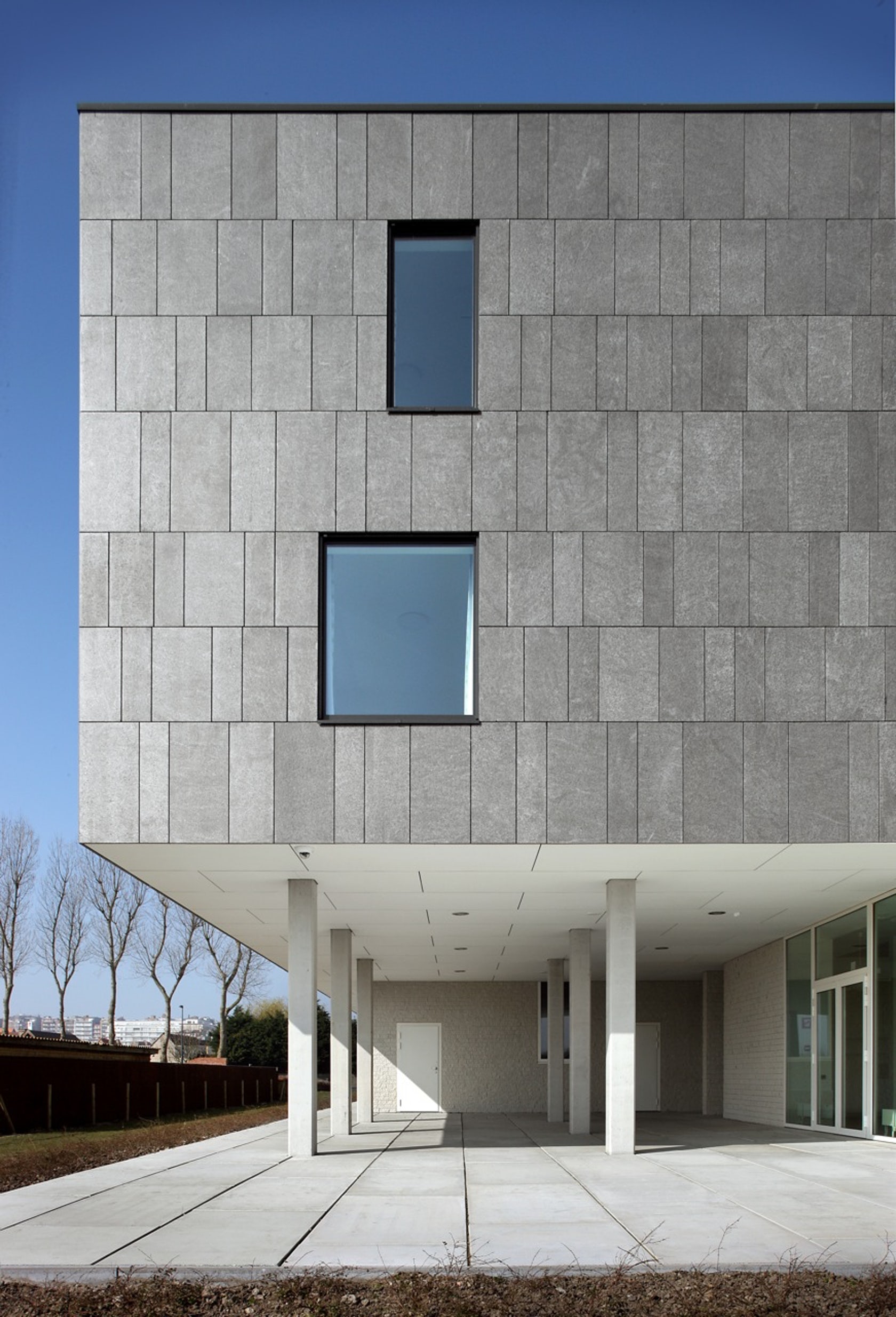
Carehotel Middelpunt by architectuuratelier Dertien12 + Herman Markey is clad in flamed basalt stone on the upper levels of the building
Basalt: Basalt is a dark, blue-gray, volcanic stone that is suitable for both interior and exterior wall cladding applications. Basalt appears to be very fine-grained and is the most common type of volcanic rock used throughout architecture. One notable quality of basalt is that it possesses extremely high insulating capabilities.
Bluestone: Bluestone is the commercially used name for a number of building stone varieties. Including basalt and limestone, this category includes at least twenty different types of stone with a blue tint.
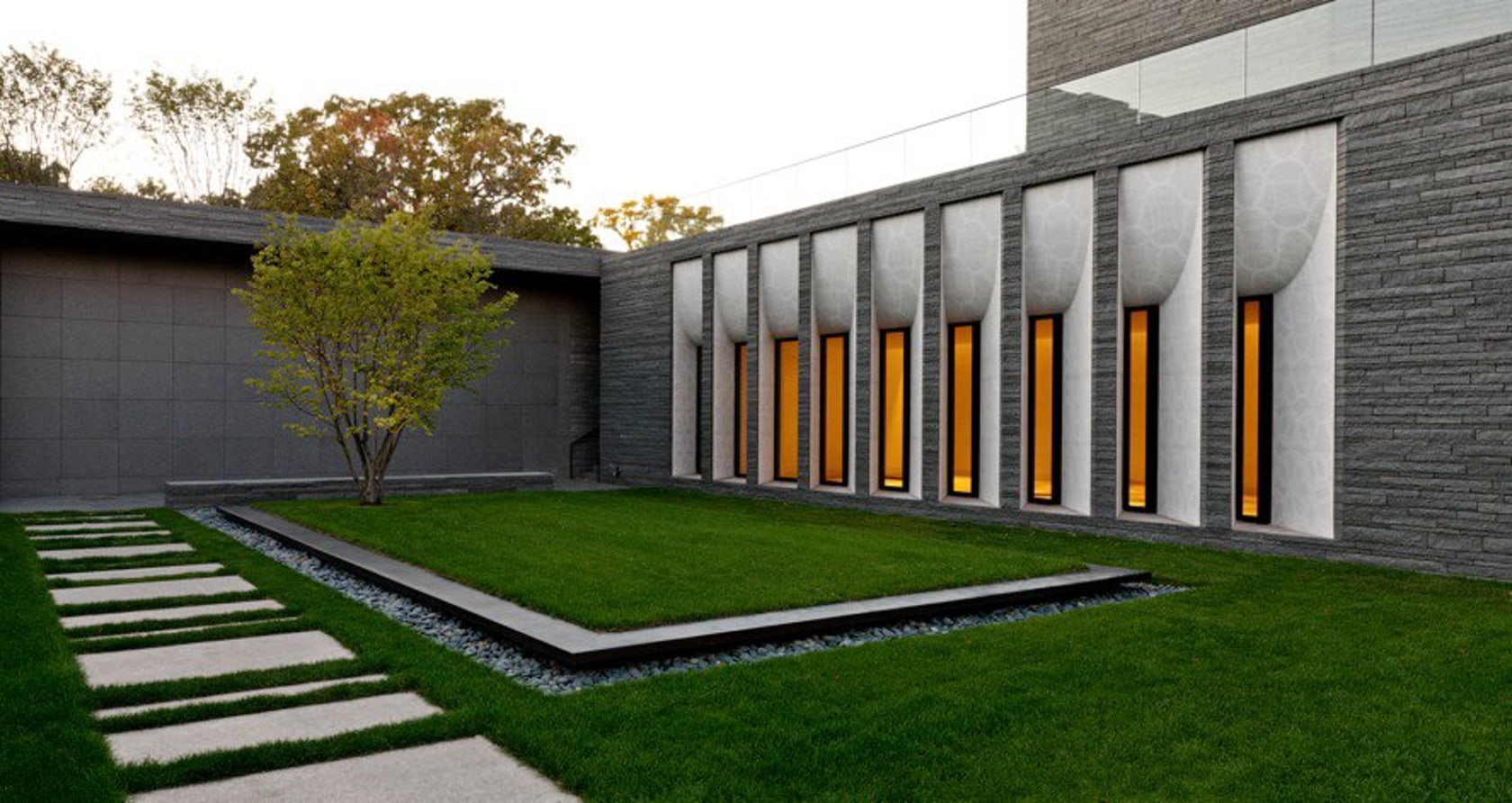
Garden Mausoleum at Lakewood Cemetery by HGA Architects and Engineers is clad in roughly-textured gray granite and white mosaic-marble
Granite: Granite is a coarse-grained stone made up of interlocking crystals. It is one of the most widely occurring stones in the world and an extremely popular building material for both interior and exterior cladding applications. Granite is known for its durability and the permanence of its color and texture.

Dudley Square Neighborhood Police Station by Leers Weinzapfel Associates is clad in golden Jerusalem stone; image via Leers Weinzpfel Associates
Jerusalem Stone: One of the oldest stones used in building construction, Jerusalem stone is made from a pale form of limestone and dolomite. This type of stone is extremely dense and far more resistant to weathering than other limestones. As a result, Jerusalem stone is very common as an exterior cladding material.
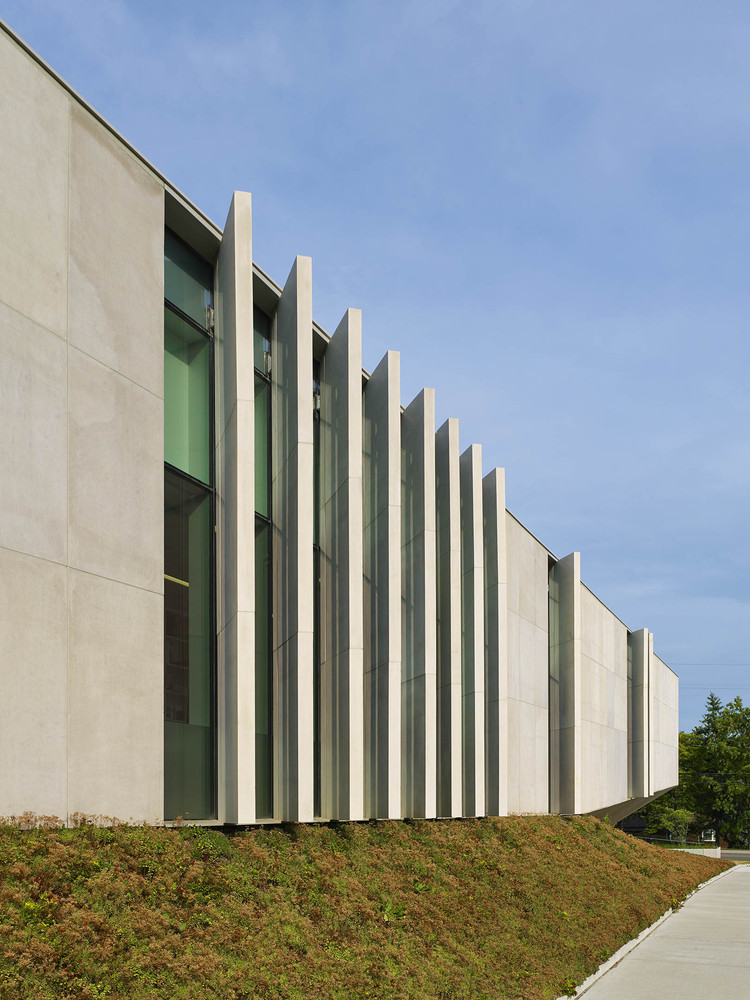
The Waterdown Library and Civic Center by RDH Architects; image via ArchDaily
Limestone: Limestone is lauded for its aesthetic diversity and flexibility. In color, limestone ranges from pure whites, beiges, to subtle browns with hints of blue. In texture, limestone ranges from creamy and soft to chunky and harshly veined. Limestone is a great option for building faces because it can be carved and shaped relatively easily.
Marble: Marble has had a rich and tumultuous history. Once the premier material in the architect’s palette, the difficulties of building with marble and the development of cheaper alternatives have led to a steady decline in its use as a façade treatment. However, as displayed in Architizer’s collection, “Marble Marvels: 7 Innovative Stone Façades,” many contemporary architects are working to restore marble to its former glory.
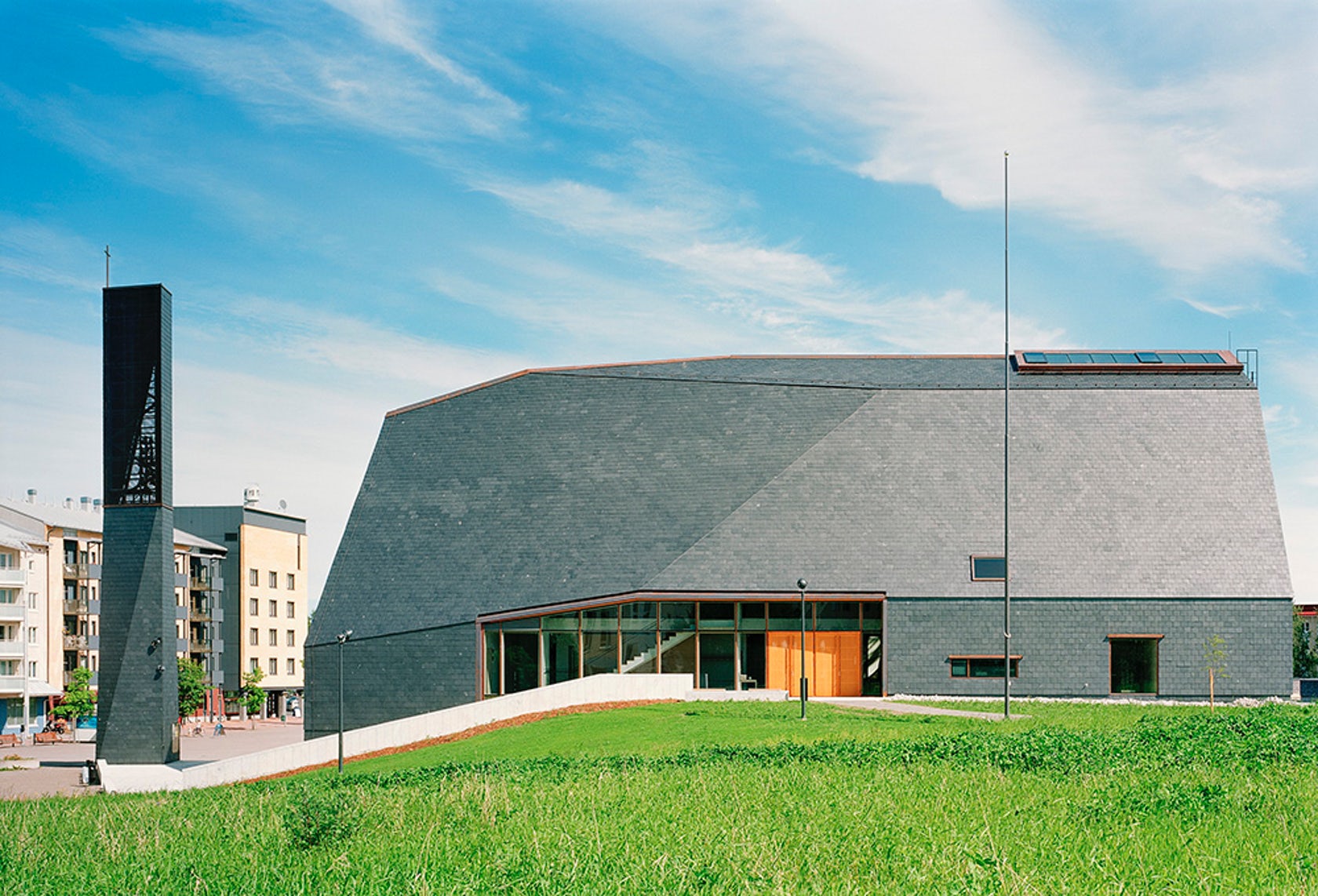
Kuokkala Church by Oopeaa Office for Peripheral Architecture is clad in slate tiles
Slate: Slate is a fine-grained metamorphic stone that is considered to be an optimal building material for both interior and exterior cladding. Due to its elegant and sophisticated appearance, high durability, excellent water resistance and low maintenance, slate has become a stand-out architectural element in modern design.
Small samples from your manufacturer will show the typical colors and textures of these aforementioned types of stone. However, they may not properly elucidate the natural variations that are present in large-format stone panels. For this reason, it is extremely beneficial to examine precedents and case studies that harness stone from the particular quarry that you are interested in.
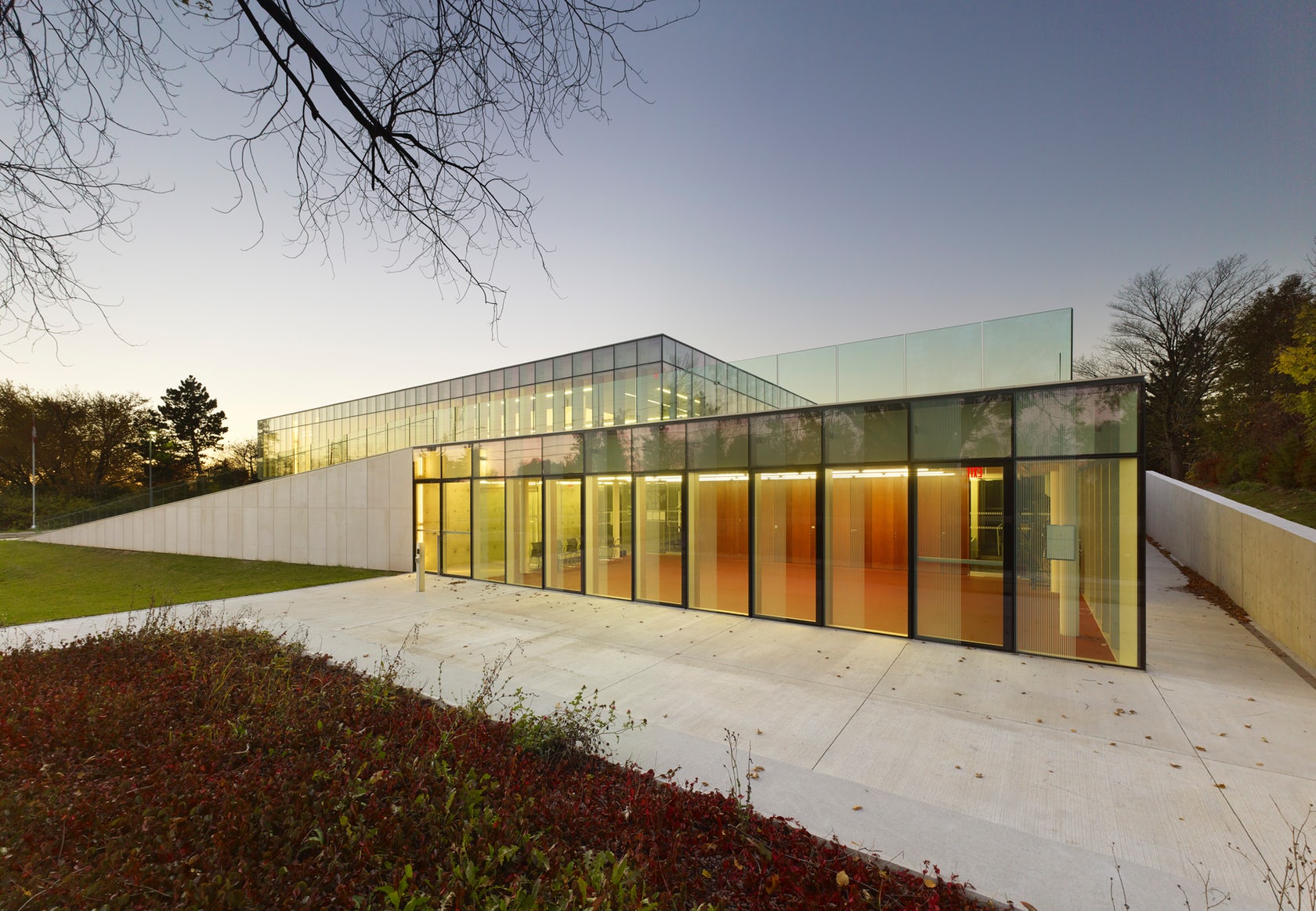
The Waterdown Library and Civic Center by RDH Architects features limestone cladding
Aesthetics
The aesthetics of stone are affected by how the stone is extracted, processed and finished.
Color: As explored in the previous sections of this article, there is extensive variation in the color of natural stone. Basalt is typically dark gray, Jerusalem stone is available in pale hues such as off-white and golden-pink, granite is available in thousands of colors and limestone ranges from white to black, though gray is predominant. If you have a particular color in mind, consult with your manufacturer early on and ask them what colors may be available and suitable for your project.
Pattern: Similar to color, there is extensive natural variation in the patterns and veining of different stones. In some cases, it is possible to custom order stone for your project. Talk to your manufacturers and get a sense of the options that are available.
Texture and Finish: The texture of stone is also extremely varied, ranging from coarsely fragmented to finely grained and completely smooth. Some of the most common terms that you will come across in your material search are polished, honed and sandblasted.
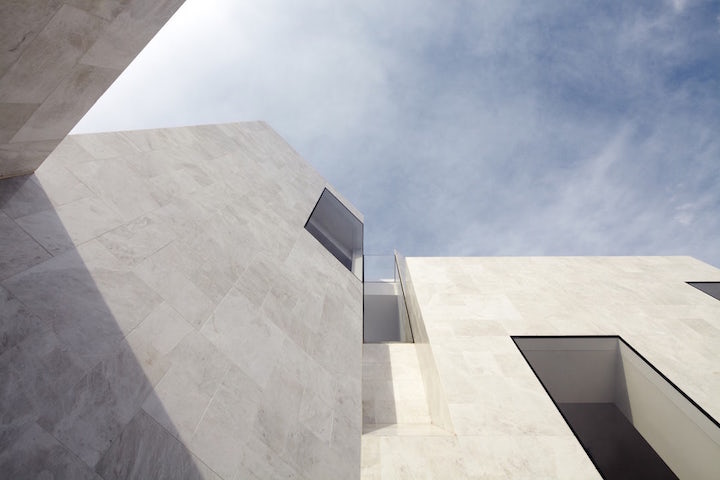
The street façade of Beaumaris Dental by Demaine Partnership Architects features a smooth veneer of polished marble and glass
According to The Marble Institute of America, a polished finish indicates that the stone has been treated to embolden the contrast and character of its natural colors.
A honed finish indicates that the stone has been ground down to a smooth and consistent surface. With stones such as granite and marble that possess a natural shine, a honed finish means that the stone’s gloss will be removed, leaving a matte surface. In general, honed finishes are easier to maintain than polished surfaces.
Sandblasted means that the surface of the stone has been treated with a high pressure blast of silica. This creates a rough but tidy finish that is both finely textured and granular.
Performance
Sustainability: According to Nauenberg, “In terms of the environmental impact of stone, it’s relatively neutral because you do very little to transform it into a usable state. You just cut it. And in the future when you are done with it, it can still be recycled in its natural form. However, it is important to acknowledge the environmental impact of manufacturers shipping stone internationally, from other parts of the world.”
Durability: Stone is exceptionally strong, dense and well-suited for cladding applications. Keep in mind that some types of stone, including limestone, are particularly vulnerable to weathering. Granite, however, tends to retain its color and pattern for a very long time. For this reason, always consider the weathering characteristics of a particular stone before integrating it into your project.
Installation: In most cases, installing natural stone requires experienced engineers. Leading up to the execution of your project, make sure that the fabrication team is well suited to safely carry out on-site construction.
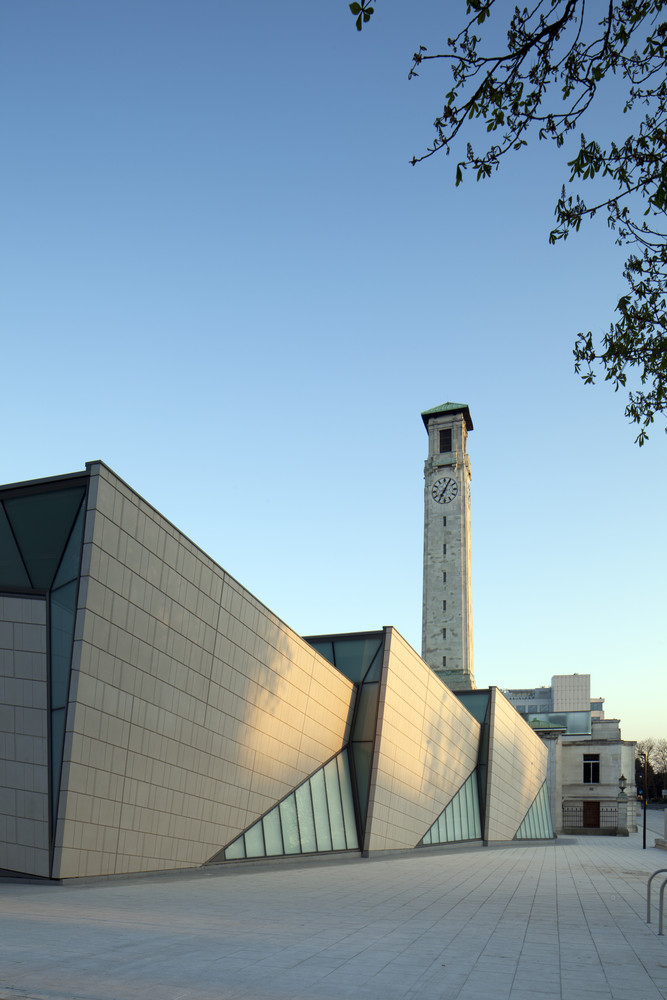
Sea City Museum by Wilkinson Eyre Architects; image via ArchDaily
Insulation: Stone cladding can be easily coupled with thermal insulation products that are designed to reduce the heat loss or heat gain of a building envelope. The insulation should be non-combustible, rot and vermin proof and non-absorbent. In designing the insulation layer, strive for the lowest possible U-Value.
Maintenance: It is important to keep natural stone clean in order to avoid cracking over time. In addition, certain stones may break down or become slick with the oxidizer deposits. In advance of construction, consult with your manufacturer to understand the maintenance requirements of a particular stone.
Browse the Architizer Jobs Board and apply for architecture and design positions at some of the world’s best firms. Click here to sign up for our Jobs Newsletter.
Feature image: Valletta City Gate by Renzo Piano Building Workshop, Valletta, Malta
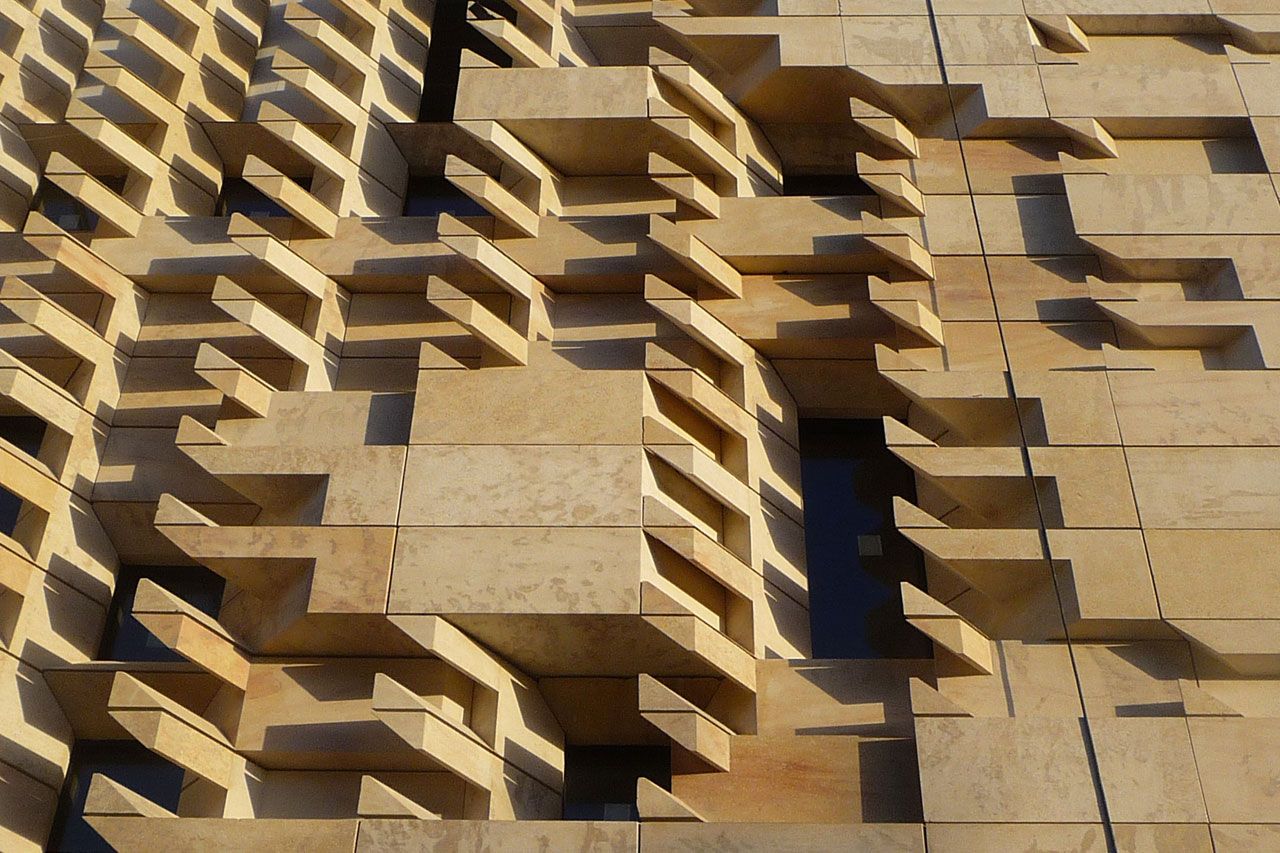
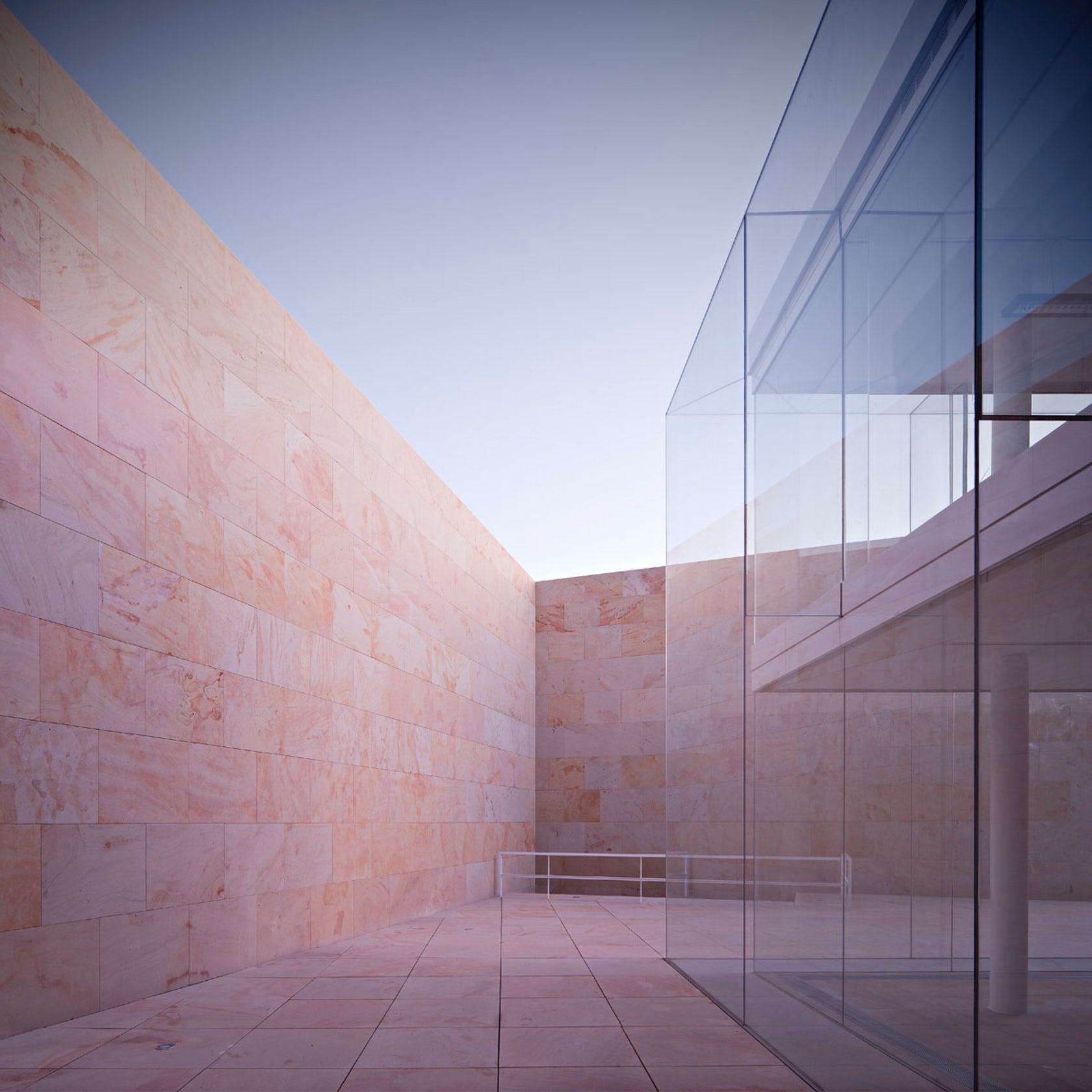
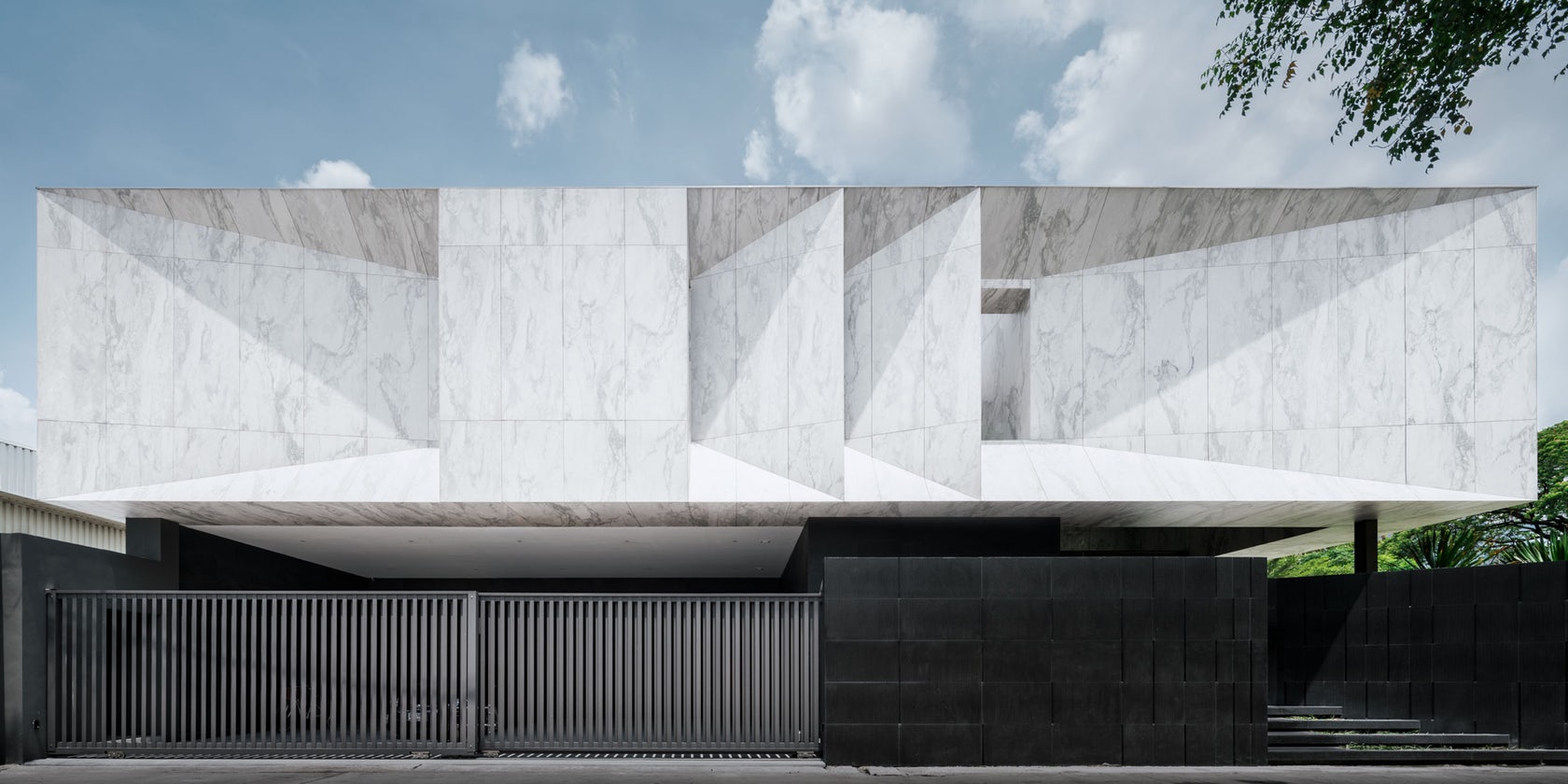
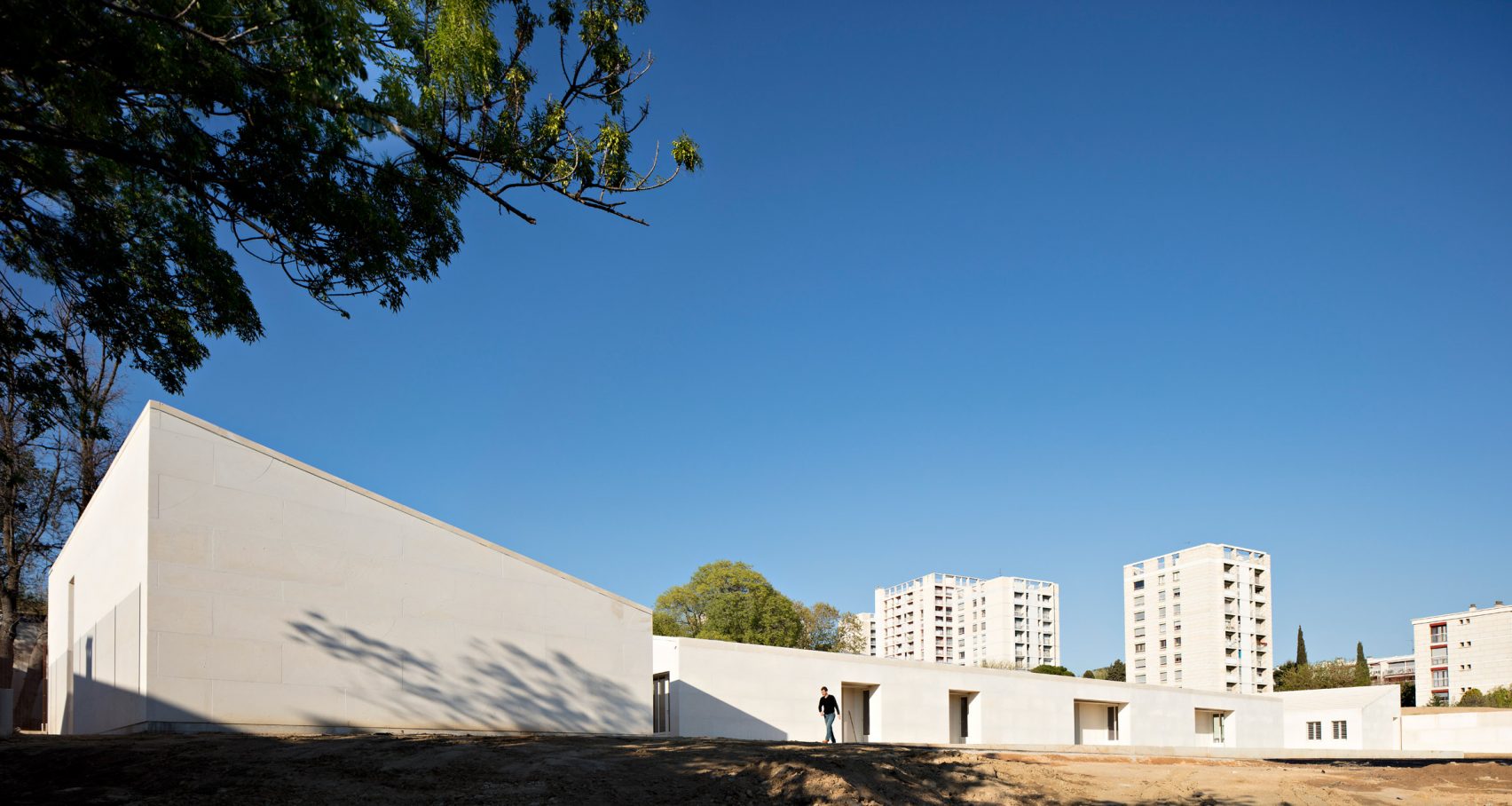
 Beaumaris Dental
Beaumaris Dental  Carehotel Middelpunt
Carehotel Middelpunt  Kuokkala Church
Kuokkala Church  Marble House
Marble House  Offices for the Junta de Castilla y Leon
Offices for the Junta de Castilla y Leon  The Waterdown Library and Civic Centre
The Waterdown Library and Civic Centre 


